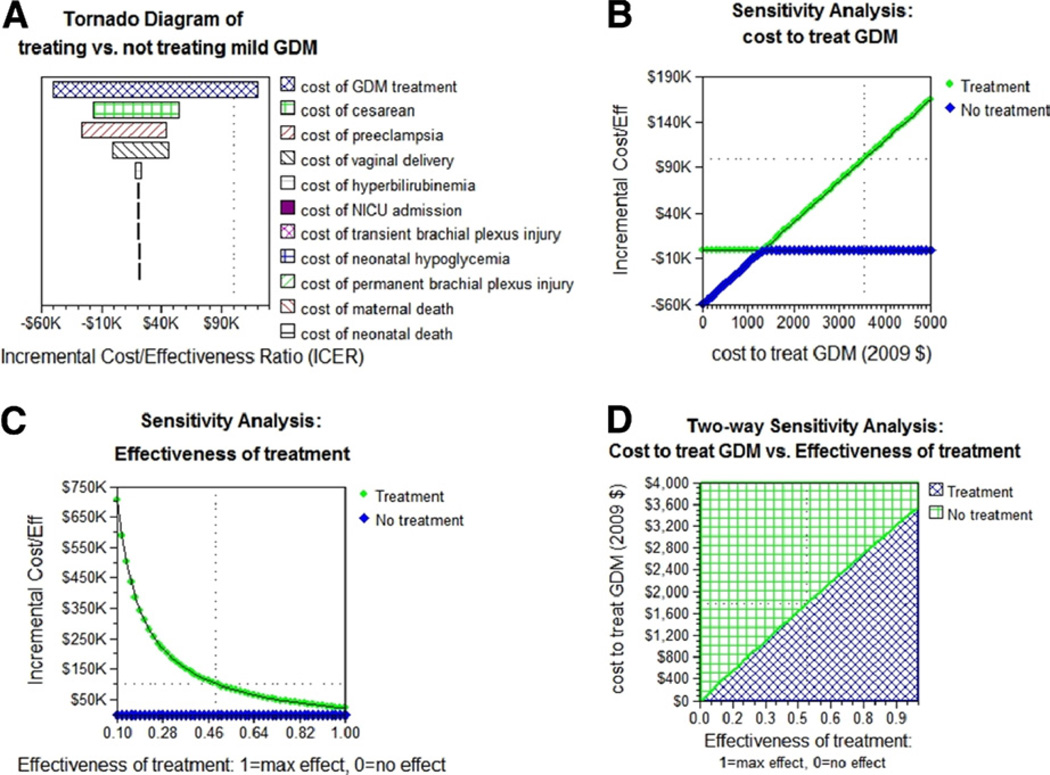FIGURE 2. Sensitivity analyses.
A, Tornado diagram showing how varying the costs affects the incremental cost-effectiveness ratio (ICER). Only increasing the incremental cost of treating GDM above $3555 can make treating GDM not cost-effective (ICER >$100,000/QALY). B, Univariate sensitivity analysis on the incremental cost to treat mild GDM. At a cost of $1330 to treat, treating mild GDM becomes more expensive than not treating but still cost-effective. Treating mild GDM was no longer cost-effective if the cost to treat was greater than $3555. C, Univariate analysis on the efficacy of treatment. 1, 100% efficacy; 0, no difference between treatment and no treatment. At the baseline cost of $1786 to treat GDM, treating mild GDM is cost-effective as long as treatment meets at least 49% of its expected results. D, Two-way sensitivity analysis on the cost to treat GDM vs efficacy of treatment. The blue-hatch region represents where treating GDM is cost-effective (below the cost-effectiveness threshold of $100,000/QALY). At 100% efficacy, the cost to treat can be as high as $3555 and be cost-effective (baseline case). As the treatment efficacy decreases, the cost at which treating GDM no longer becomes cost-effective decreases. At the baseline cost of $1786 to treat GDM, treatment can be as low as 49% and still be cost-effective.
GDM, gestational diabetes mellitus; QALY, quality-adjusted life year.
Ohno. Treating mild gestational diabetes mellitus: a cost-effectiveness analysis. Am J Obstet Gynecol 2011.

